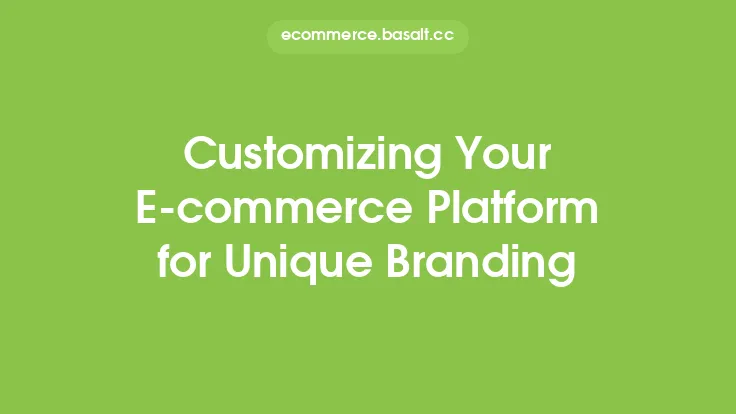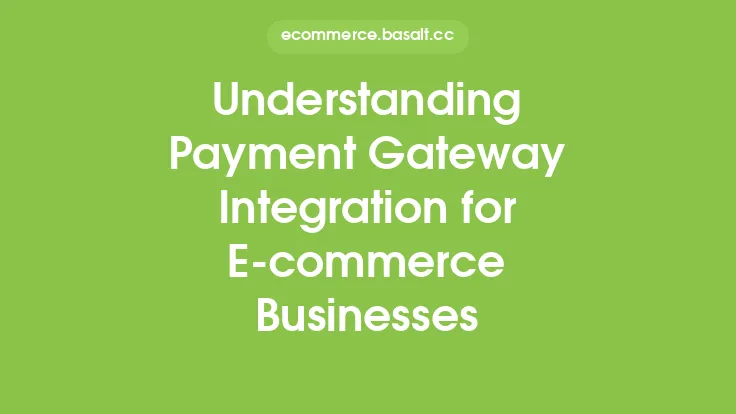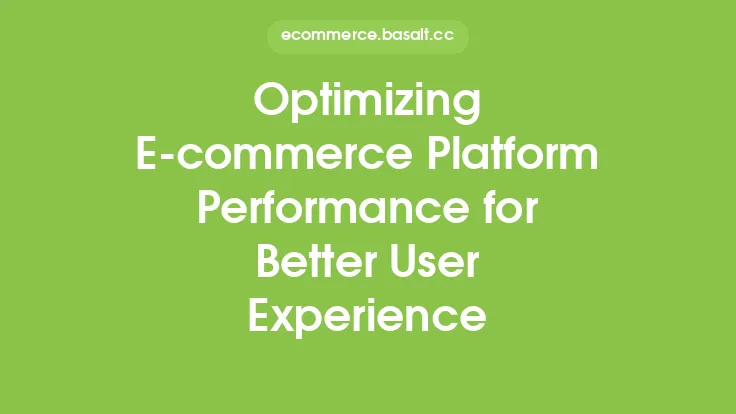E-commerce platforms have become an essential tool for businesses to reach a wider audience and increase sales. However, to provide a comprehensive and seamless shopping experience, e-commerce platforms often need to integrate with third-party services. These services can include payment gateways, shipping providers, social media platforms, and more. In this article, we will explore the importance of e-commerce platform integration with third-party services, the benefits it provides, and the different types of integrations available.
Introduction to E-commerce Platform Integration
E-commerce platform integration refers to the process of connecting an e-commerce platform with third-party services to enhance its functionality and provide a better user experience. This integration can be done through APIs, plugins, or custom coding, depending on the platform and the service being integrated. The goal of integration is to create a seamless and automated workflow that streamlines business operations and improves customer satisfaction.
Benefits of E-commerce Platform Integration
The benefits of e-commerce platform integration are numerous. Some of the most significant advantages include:
- Improved customer experience: Integration with third-party services can provide customers with more payment options, faster shipping, and more personalized recommendations, leading to increased satisfaction and loyalty.
- Increased efficiency: Automation of tasks and workflows through integration can reduce manual errors, save time, and increase productivity.
- Enhanced functionality: Integration with third-party services can add new features and functionality to an e-commerce platform, making it more competitive and attractive to customers.
- Better data analysis: Integration with analytics tools can provide businesses with valuable insights into customer behavior, sales trends, and market patterns, enabling data-driven decision-making.
Types of E-commerce Platform Integrations
There are several types of e-commerce platform integrations, including:
- Payment gateway integration: This type of integration allows customers to make payments through various payment methods, such as credit cards, PayPal, or bank transfers.
- Shipping integration: This type of integration connects an e-commerce platform with shipping providers, enabling automated shipping calculations, label printing, and tracking.
- Social media integration: This type of integration allows businesses to connect their e-commerce platform with social media platforms, enabling social media marketing, advertising, and customer engagement.
- Inventory management integration: This type of integration connects an e-commerce platform with inventory management systems, enabling automated inventory tracking, reporting, and replenishment.
- CRM integration: This type of integration connects an e-commerce platform with customer relationship management (CRM) systems, enabling automated customer data synchronization, lead tracking, and sales forecasting.
Challenges and Considerations
While e-commerce platform integration can provide numerous benefits, there are also challenges and considerations that businesses should be aware of. Some of the most significant challenges include:
- Technical complexity: Integration with third-party services can be technically complex, requiring significant development resources and expertise.
- Security and compliance: Integration with third-party services can also introduce security and compliance risks, such as data breaches, PCI-DSS non-compliance, and GDPR violations.
- Cost and ROI: Integration with third-party services can be costly, and businesses should carefully evaluate the return on investment (ROI) to ensure that the benefits outweigh the costs.
- Maintenance and updates: Integrated third-party services can require ongoing maintenance and updates, which can be time-consuming and resource-intensive.
Best Practices for E-commerce Platform Integration
To ensure successful e-commerce platform integration, businesses should follow best practices, such as:
- Carefully evaluating third-party services and their APIs, documentation, and support.
- Developing a clear integration strategy and roadmap.
- Conducting thorough testing and quality assurance.
- Providing ongoing maintenance and updates.
- Monitoring and analyzing integration performance and ROI.
Future of E-commerce Platform Integration
The future of e-commerce platform integration is exciting and rapidly evolving. Emerging trends, such as artificial intelligence, machine learning, and the Internet of Things (IoT), are expected to play a significant role in shaping the future of e-commerce platform integration. Some of the most significant trends include:
- Increased use of APIs and microservices architecture.
- Growing importance of cloud-based integrations and serverless computing.
- Rising demand for real-time data synchronization and event-driven architecture.
- Increased focus on security, compliance, and data privacy.
Conclusion
E-commerce platform integration with third-party services is a critical component of modern e-commerce. By understanding the benefits, types, and challenges of integration, businesses can make informed decisions and develop effective integration strategies. By following best practices and staying up-to-date with emerging trends, businesses can unlock the full potential of e-commerce platform integration and provide a seamless and competitive shopping experience for their customers.





